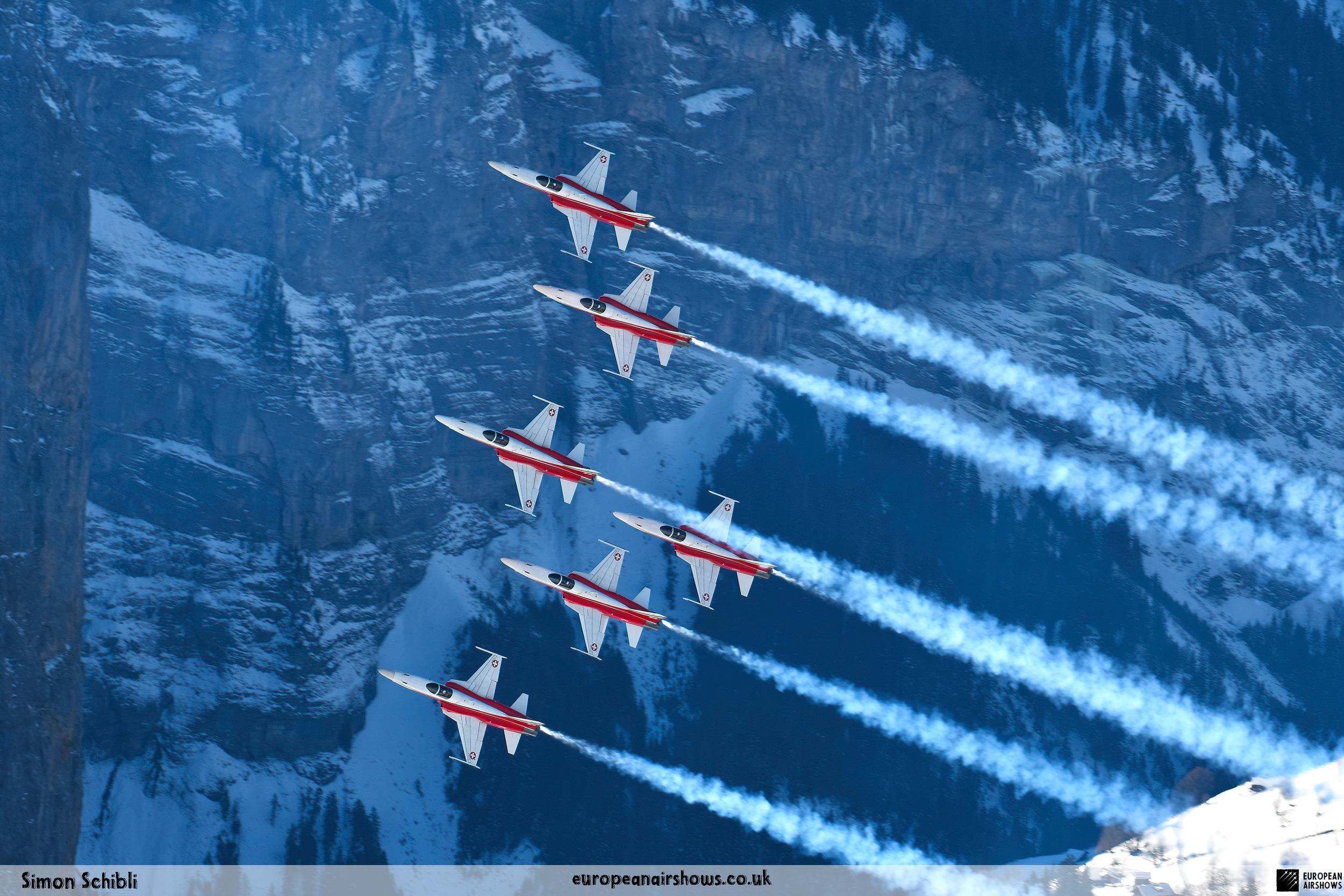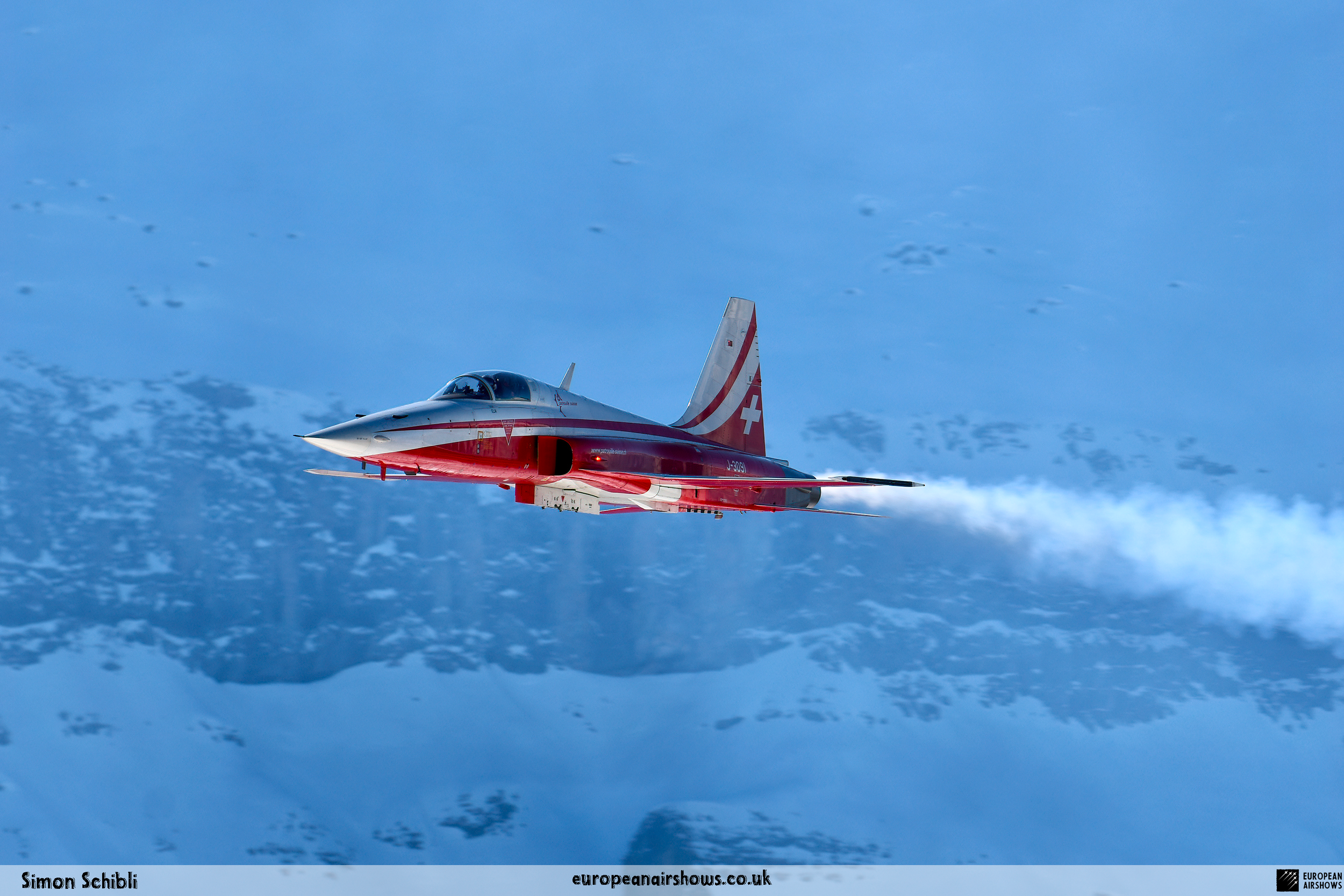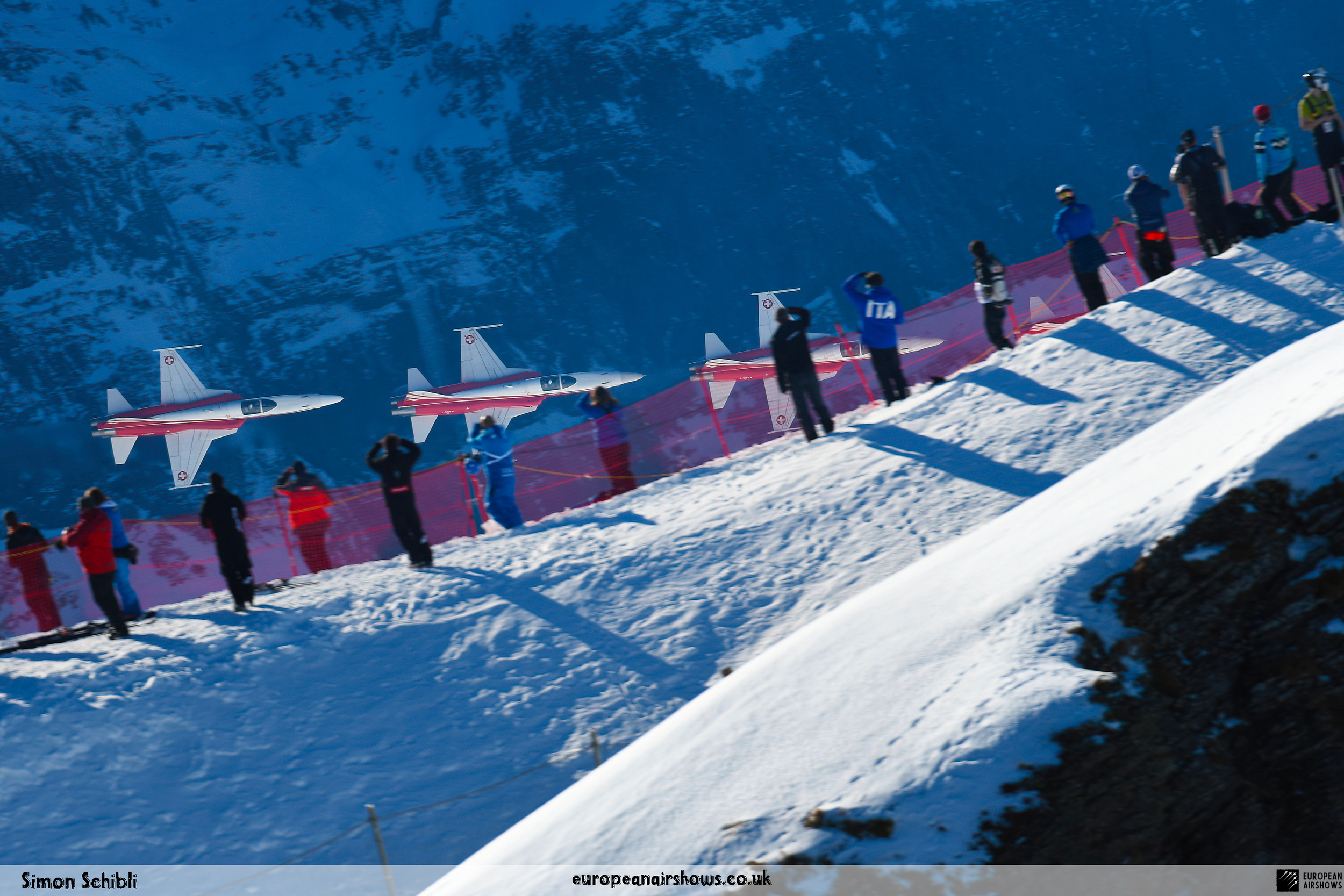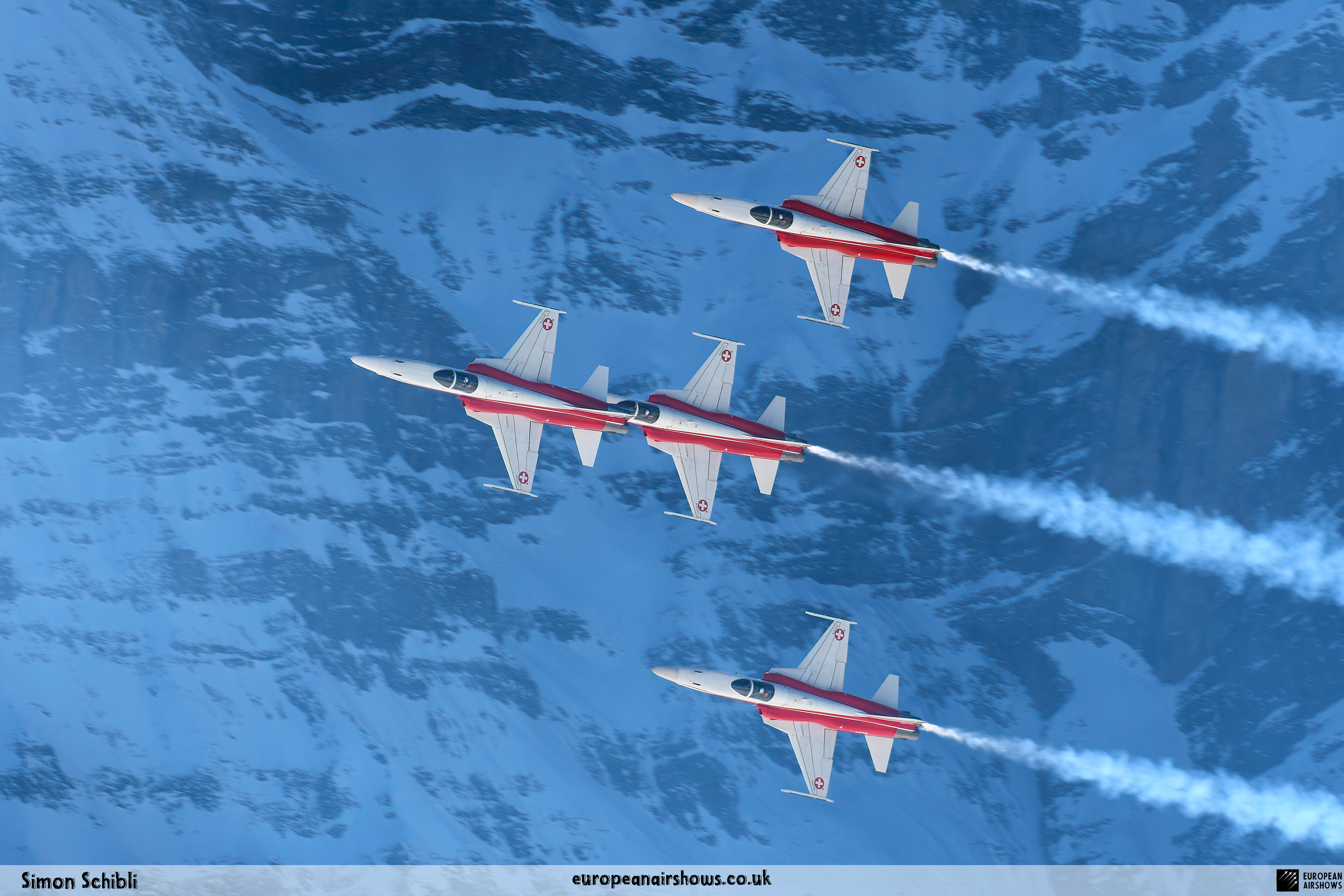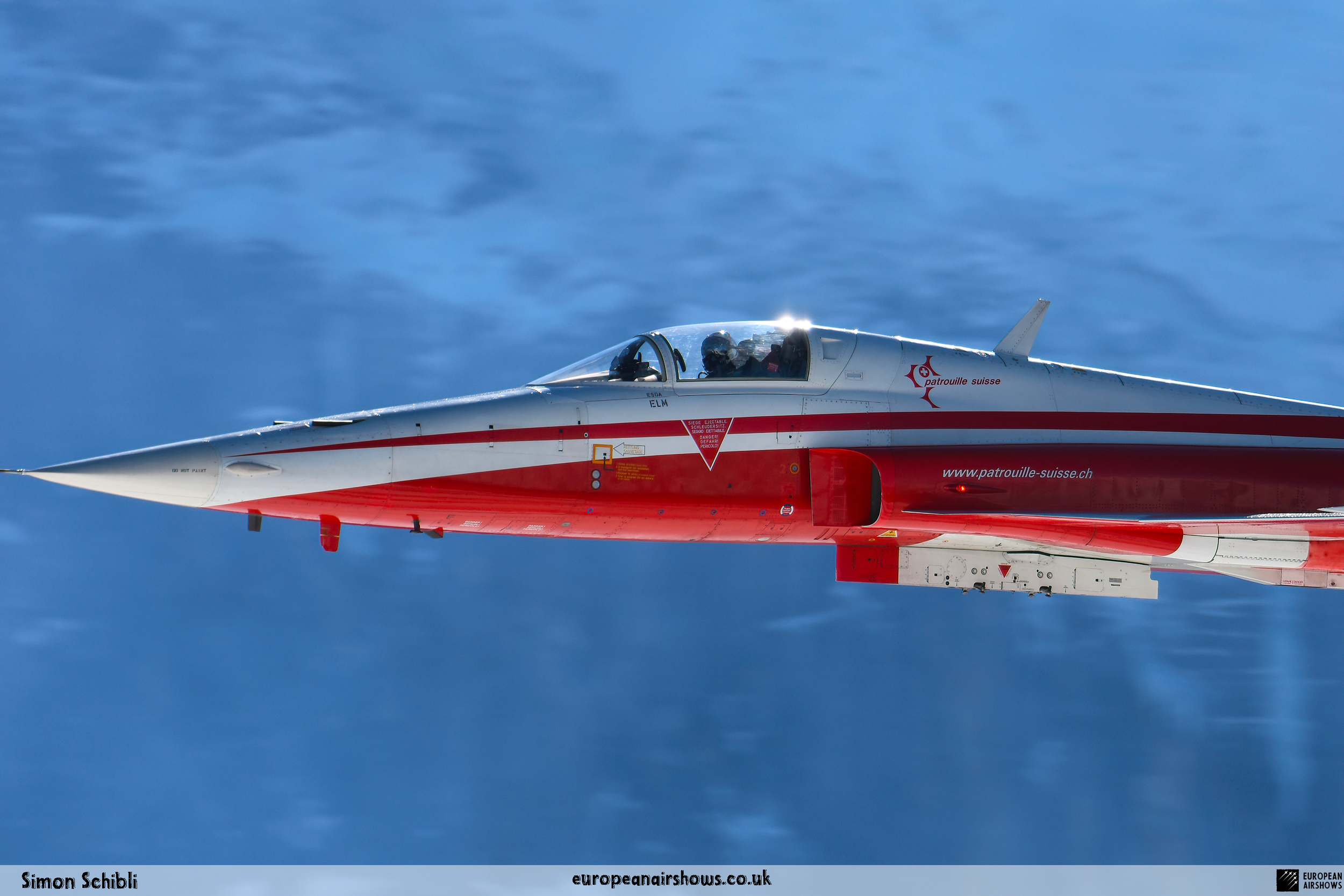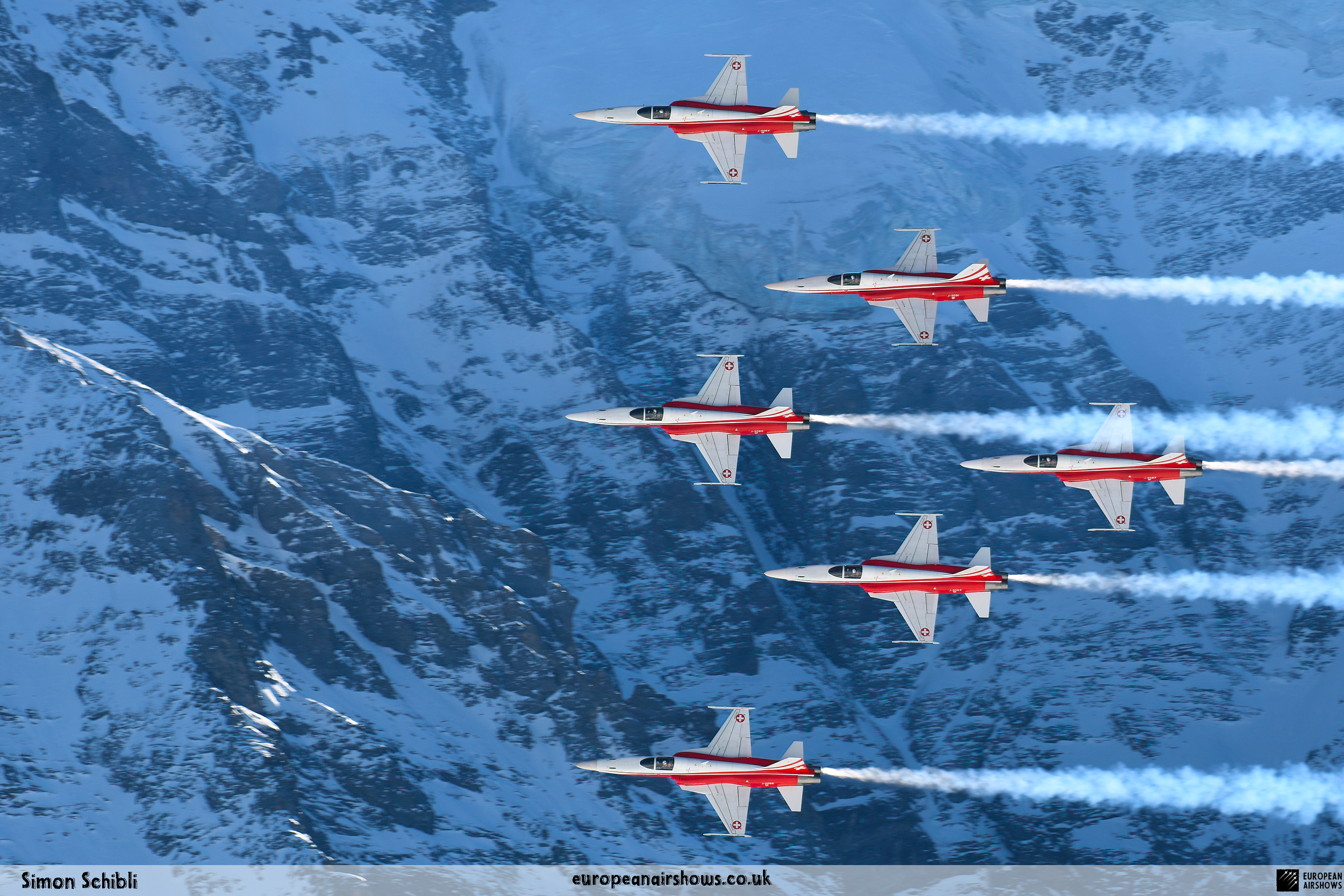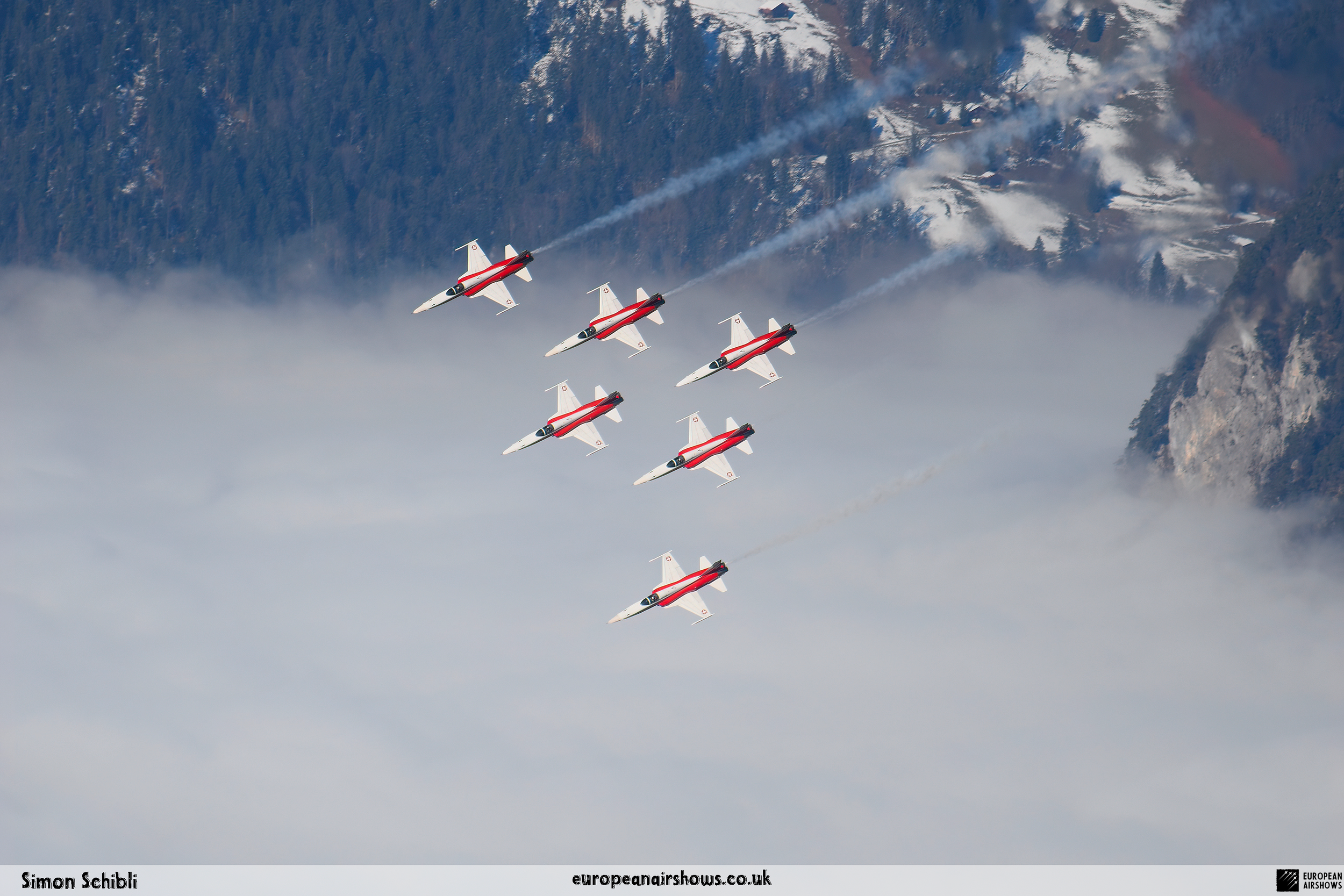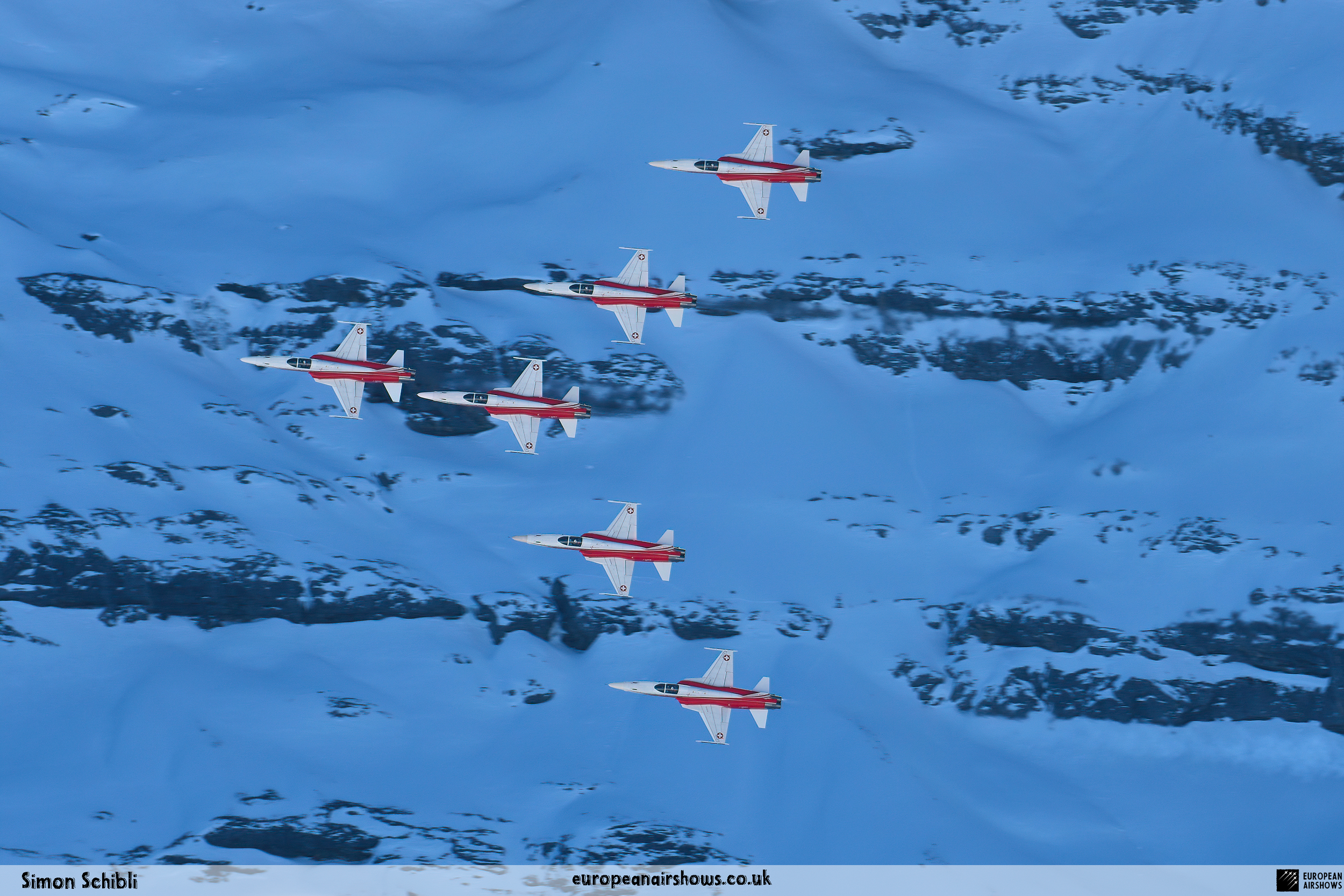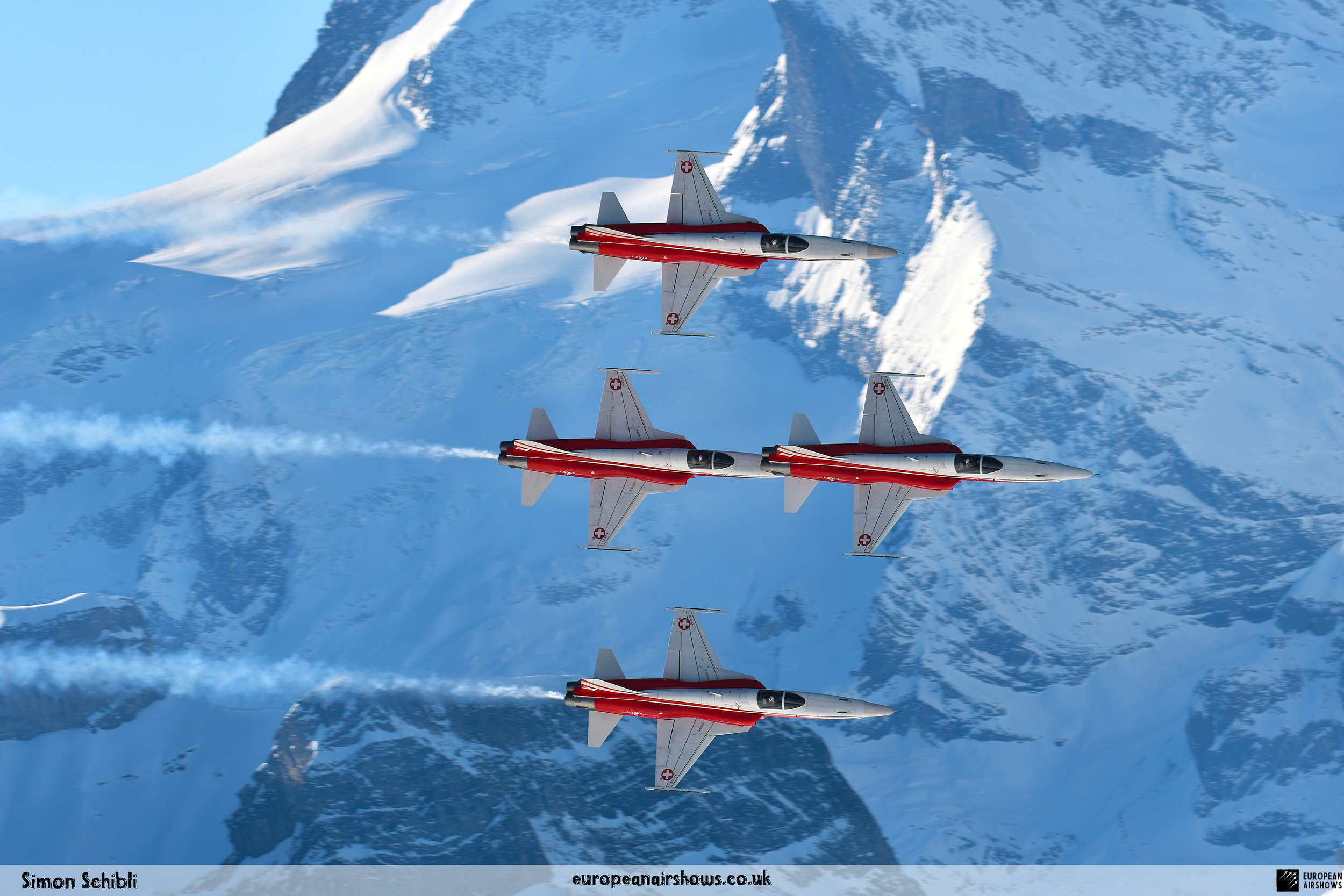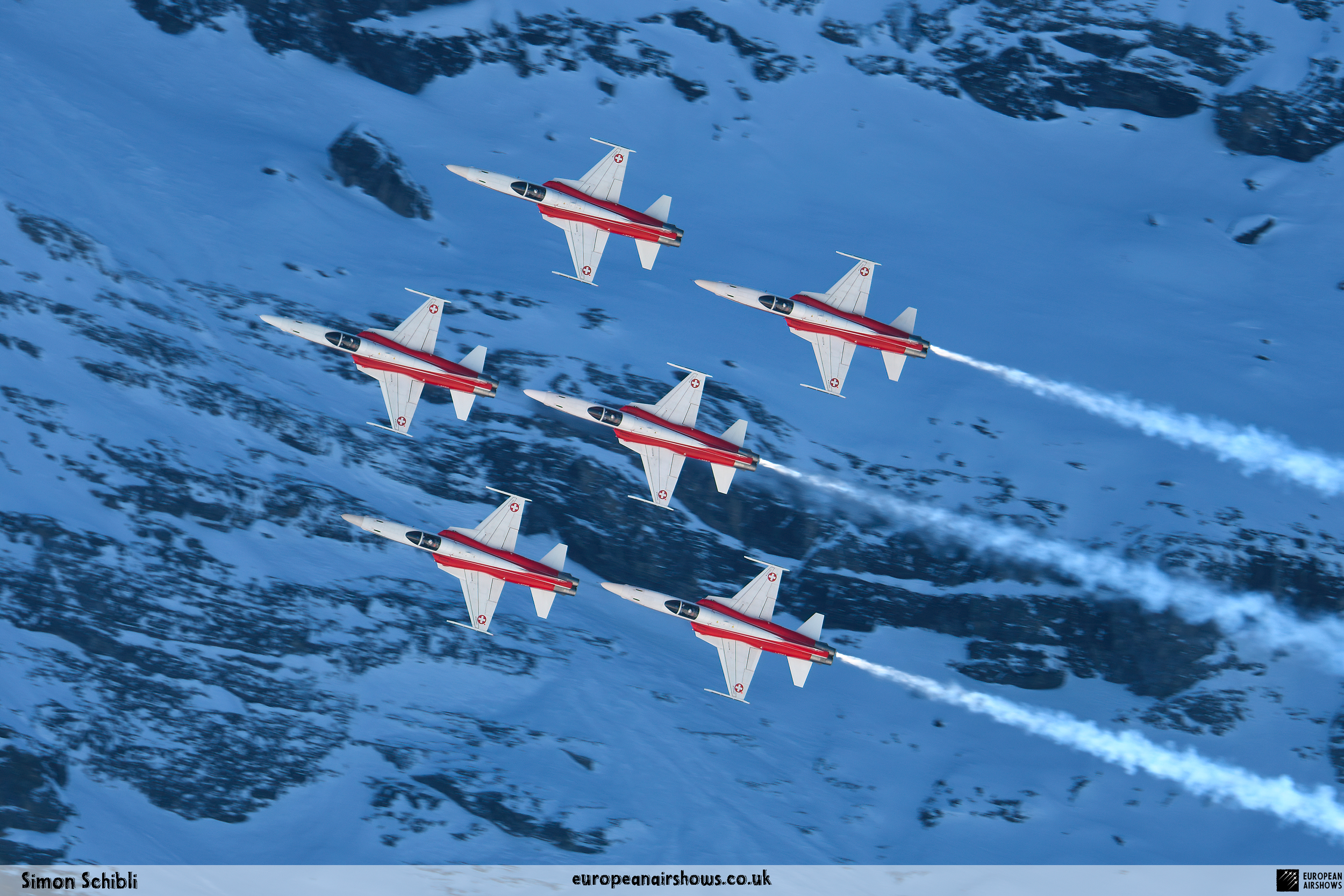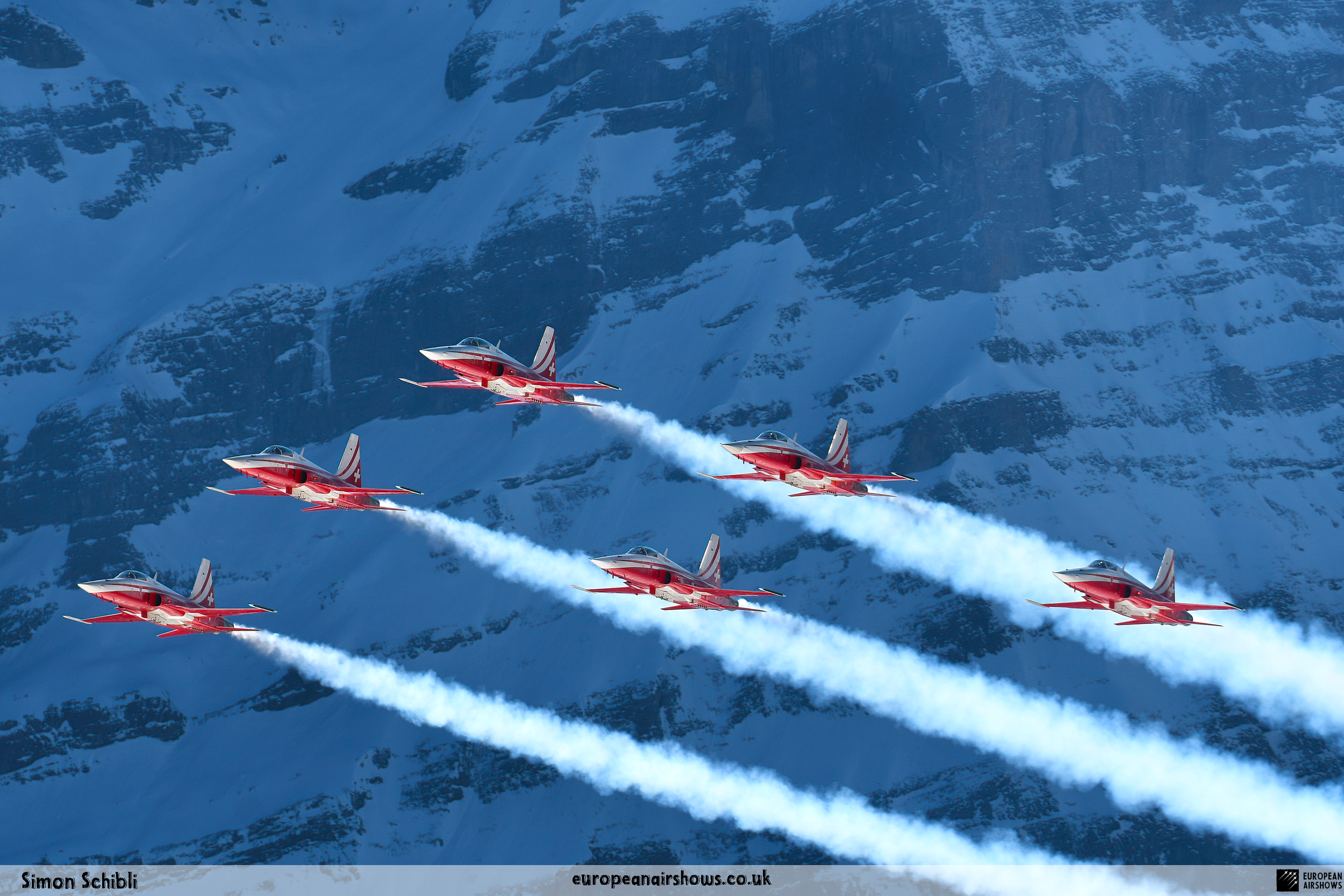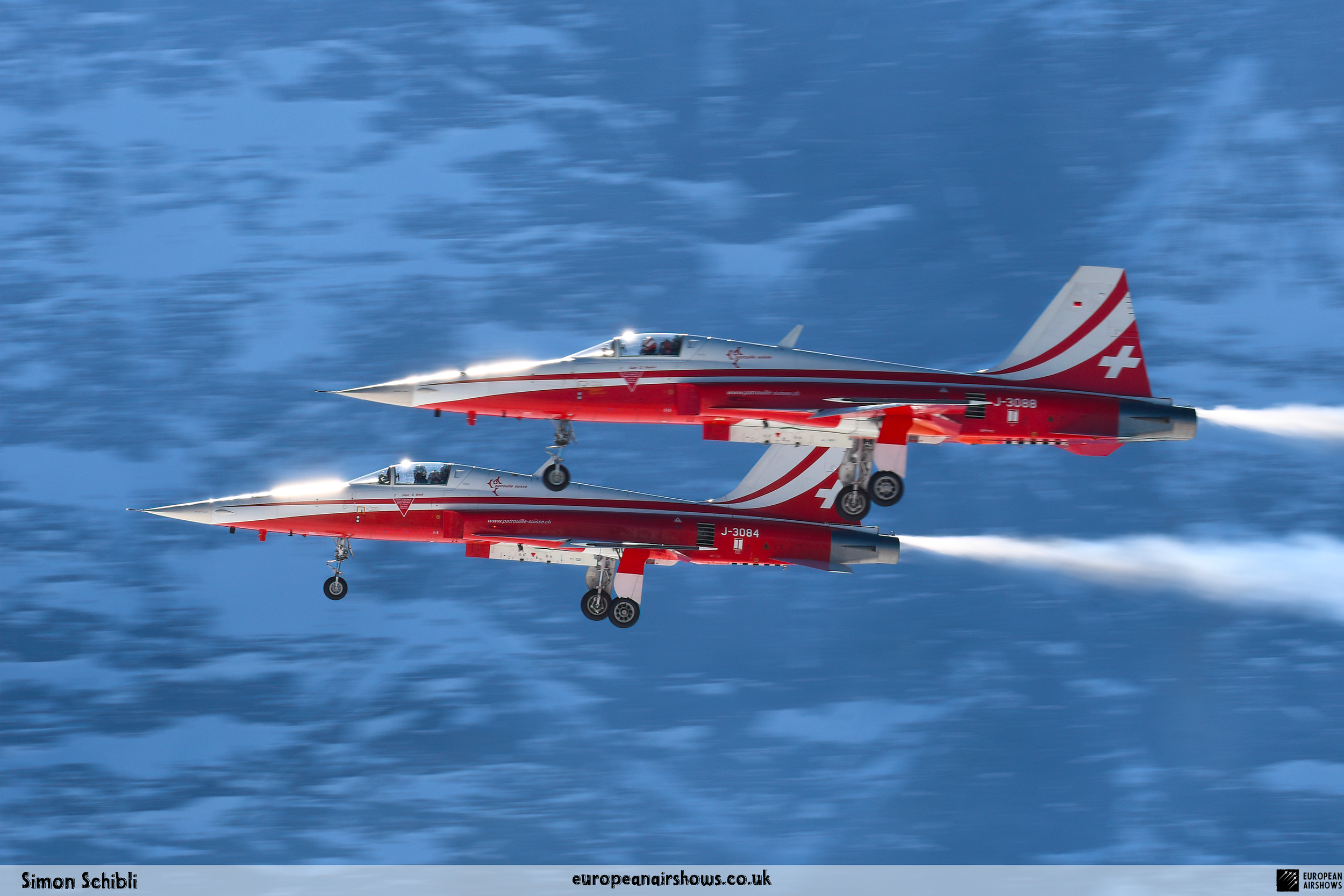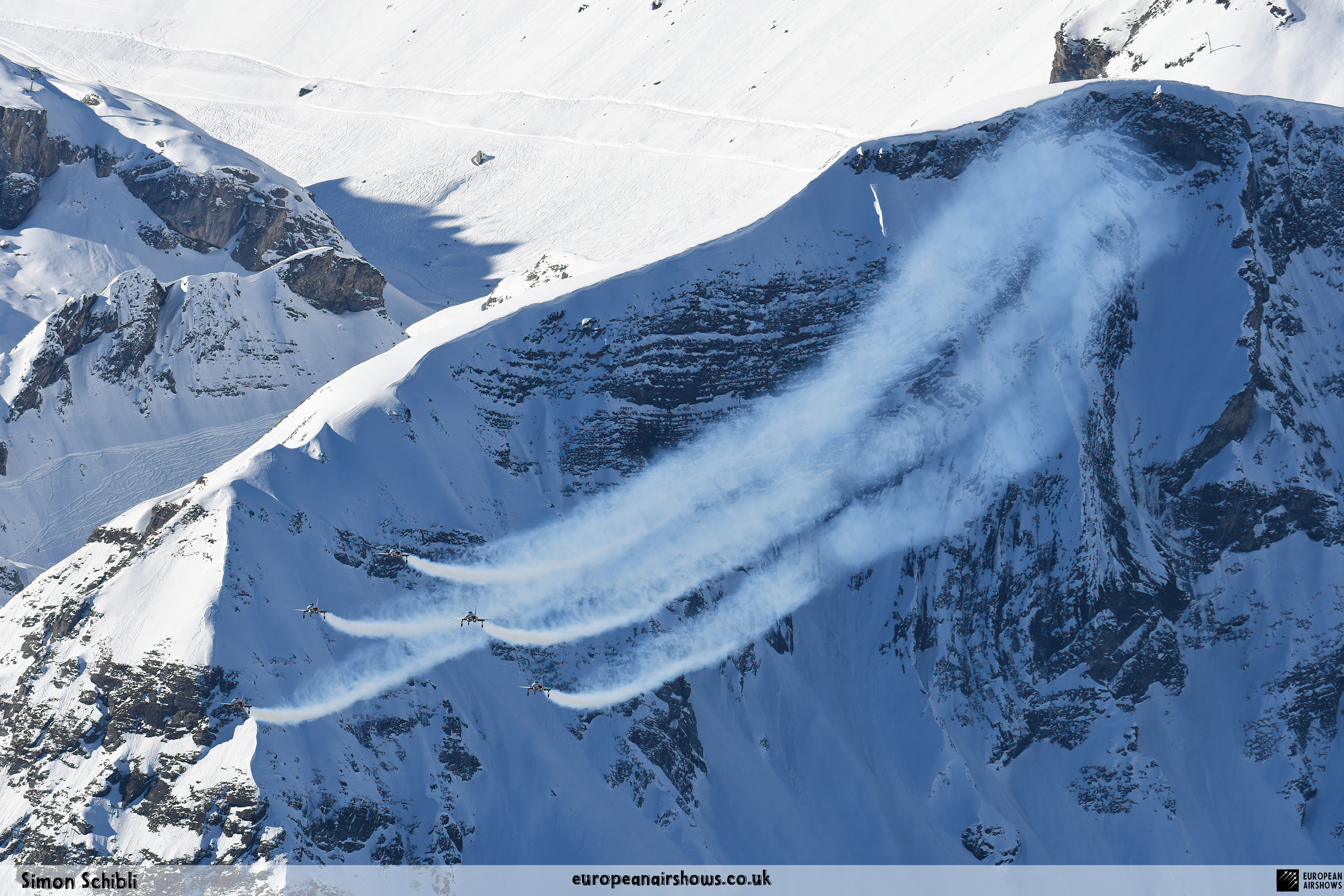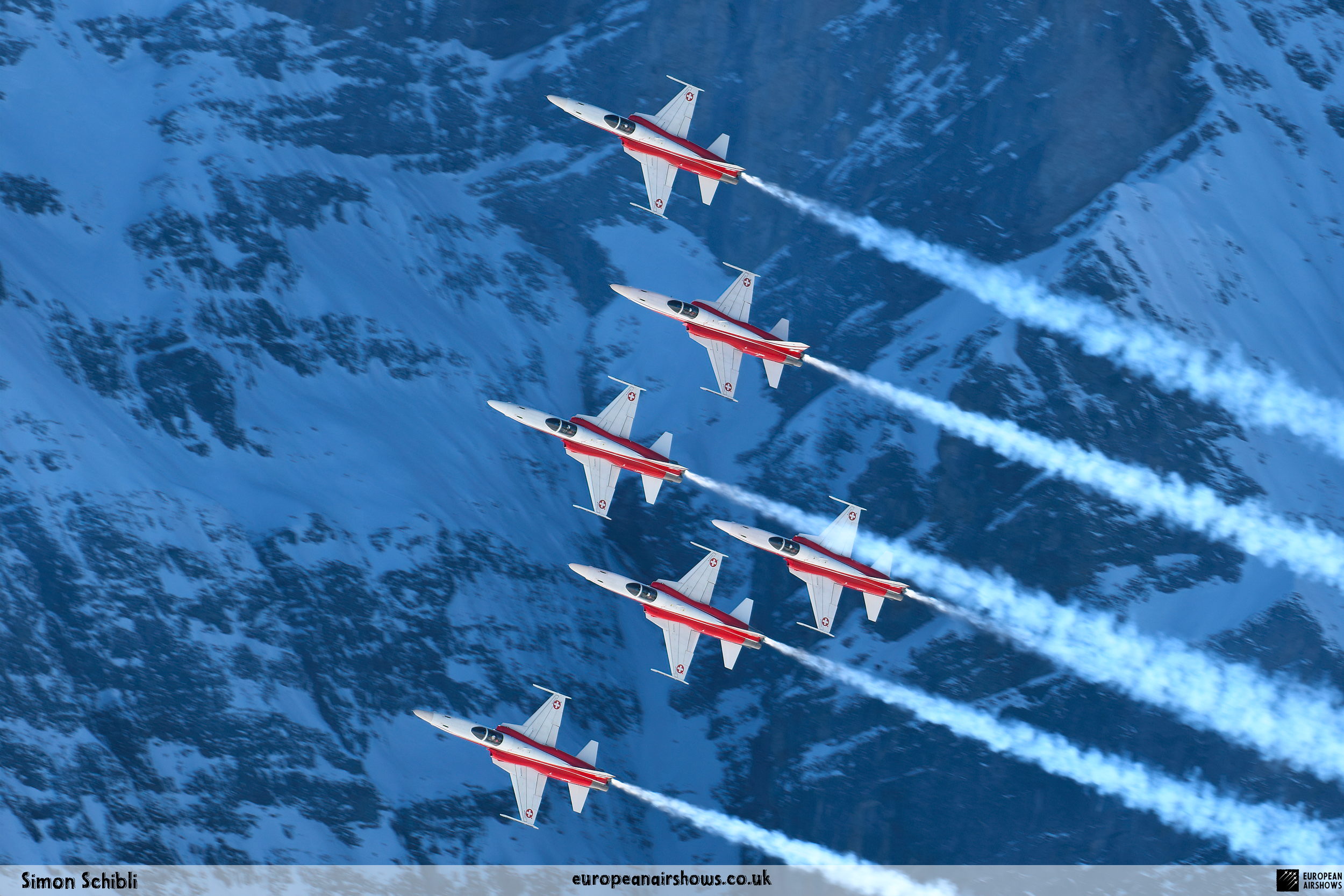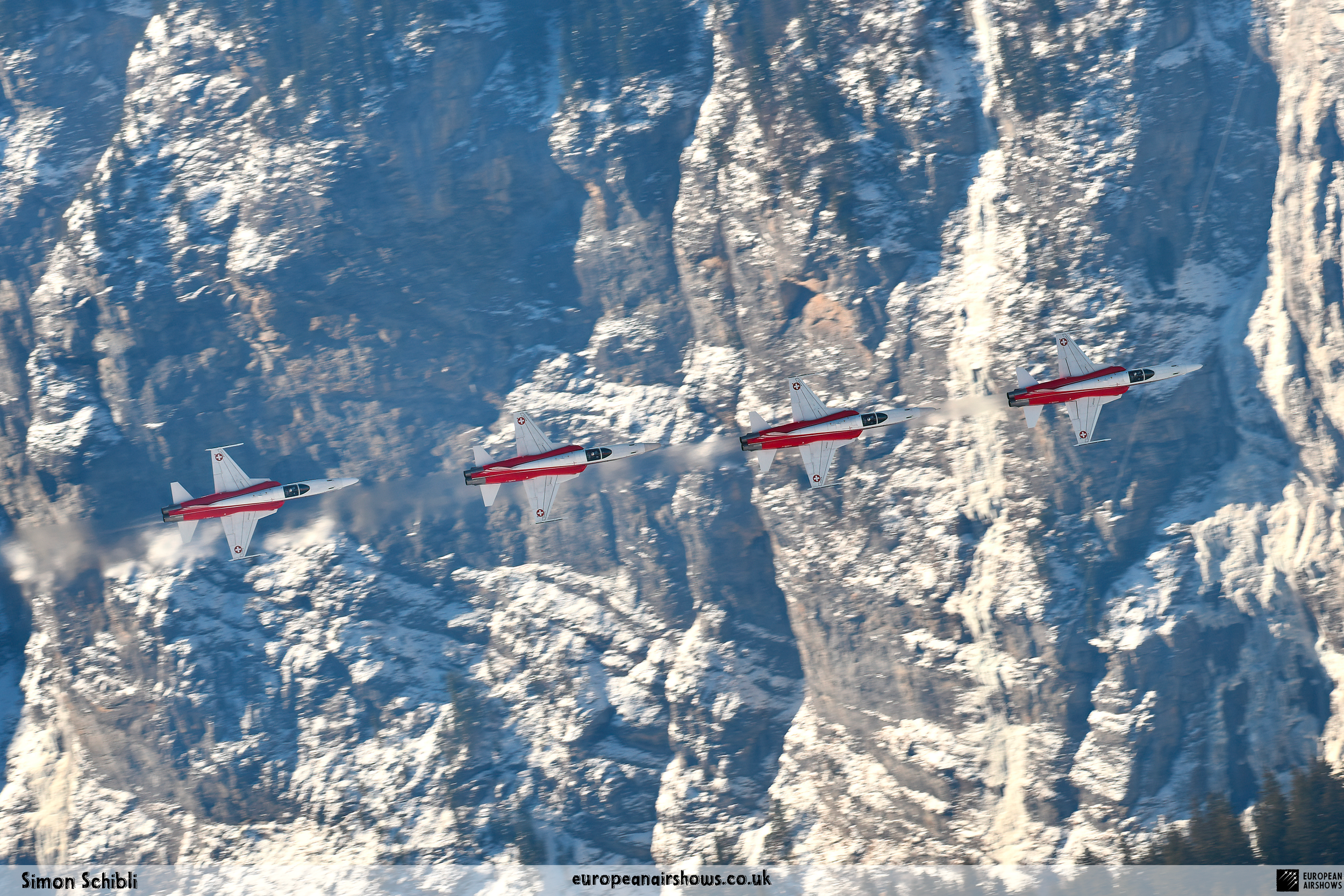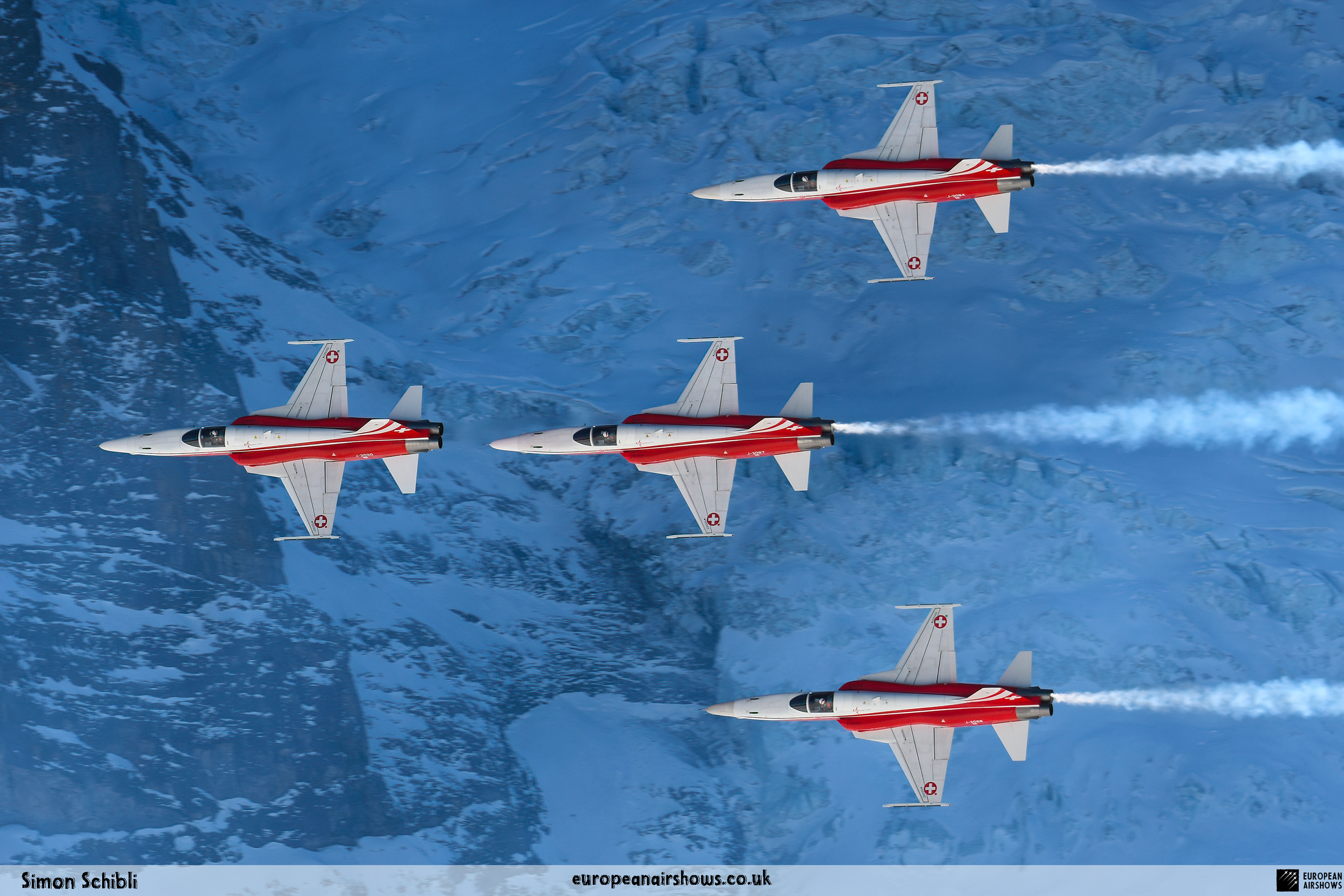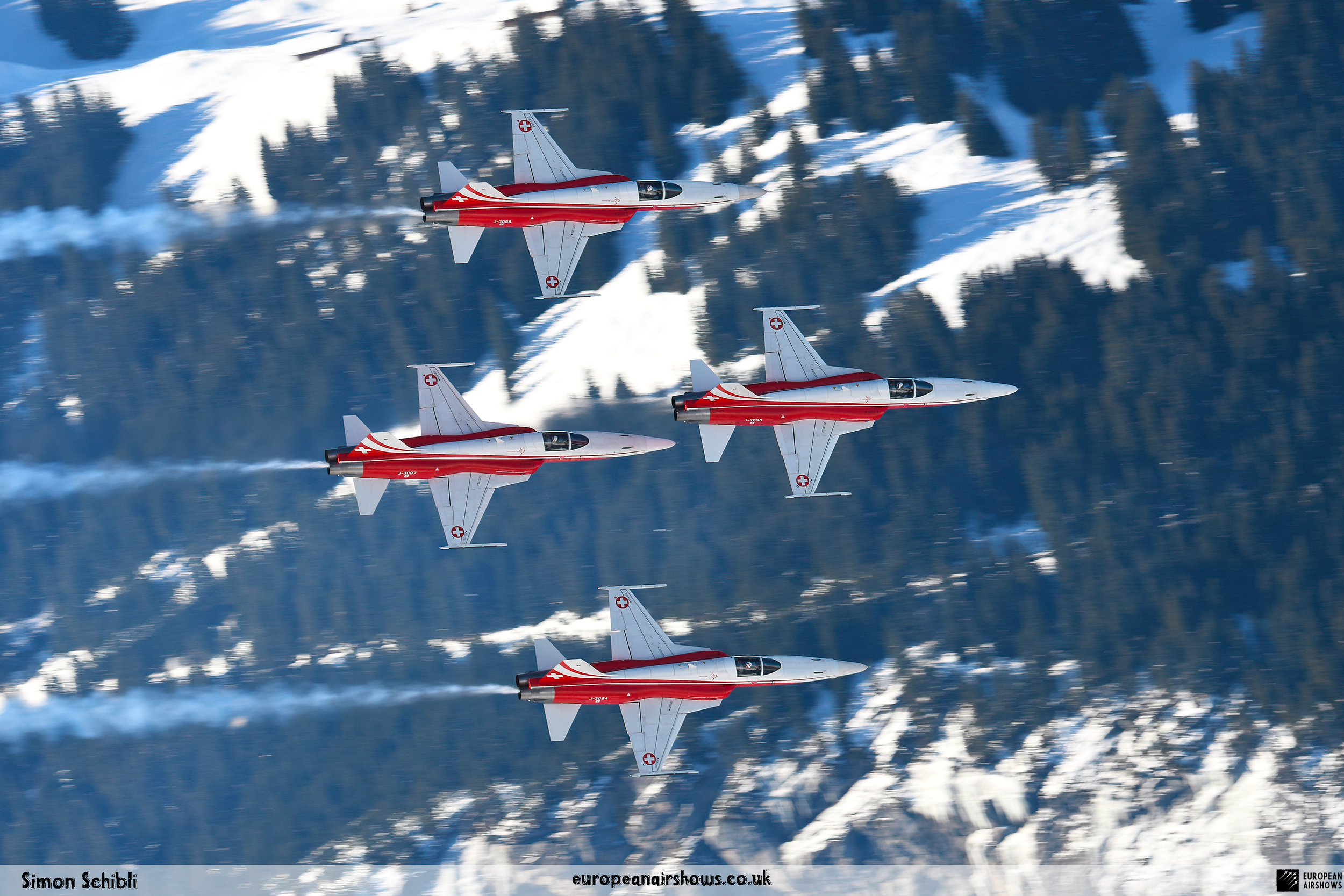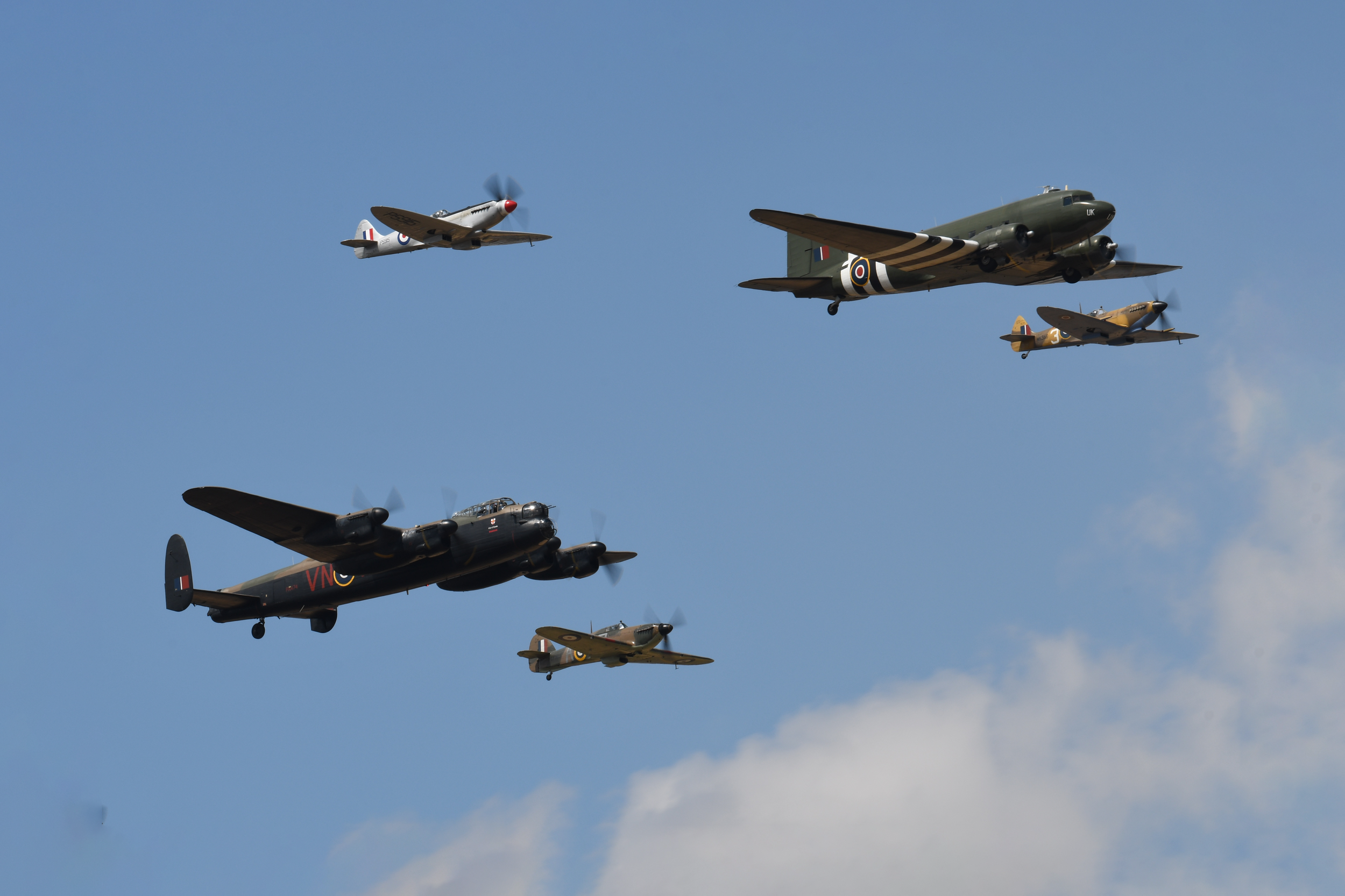Patrouille Suisse
Country
Switzerland
Size
6 Aircraft
Base
Emmen Air Base
The Patrouille Suisse is an aerobatic demonstration team of the Swiss Air Force based at the Emmen Air Base. The team consists of six Northrop F-5E Tiger II fighter/bomber jets painted in the national colours -white and red- as well as six demonstration pilots, a spare pilot, two commentators and no less than 35 technicians. The task of the team, founded in 1964, is to demonstrate the efficiency, precision and readiness of the Swiss Air Force at home and abroad and their display typically lasts approximately 18 minutes. The selection process for the new pilots is very strict with the candidates expected to have perfect flying records. The pilots of the Patrouille Suisse are considered the best military pilots in the Swiss Air Force and have different military backgrounds from F/A-18s to PC-21s.
The Emmen military airfield has served the Patrouille Suisse as home since 1994. With a new deployment concept of the Air Force, the team wanted to be relocated to the Payerne military airfield for the 2008 season, which was not carried out. Originally and until 1994, the Patrouille Suisse had its home base at the Dübendorf military airfield.
At large air shows such as RIAT or Air14, Patrouille Suisse sometimes performs a joint flypast with the PC-7 team, the Hornet Solo Display Team or the Super Puma Display Team at the opening of the flight demonstration. On September 7th 2014 at Air14 in Payerne, the Patrouille Suisse performed a full aerobatic display together with the PC-7 Team.
History
The idea to set up a demonstration team of professional pilots dates back to 1959 when the Air Force Surveillance Wing flying the Hawker Hunter Mk. 58 fighters began training a double patrol, consisting of 2x2 aircraft, for display purposes. In view of the national exhibition Expo64 in Lausanne and the celebrations of the 50th anniversary of the Air Force, formation flight training with the Hunter double patrol was intensified. Anniversary performances took place across the country, which delighted hundreds of thousands of spectators. At that time, the name Patrouille Suisse arose spontaneously, based on the French Patrouille de France.
In 1965, the Patrouille Suisse had their first scheduled season where the team visited four air shows. In the following years, the programme was constantly improved and the precision of individual manoeuvres perfected. In 1970 the team grew by an additional Hawker Hunter. Due to Switzerland’s policy of neutrality the team was not permitted to perform abroad at the time. This changed in 1978 when the Patrouille Suisse was invited to the 25th anniversary of the Patrouille de France and was allowed to demonstrate its flying skills – now with six aircraft – over Salon-de-Provence, France.
The team first appeared with a dedicated Patrouille Suisse livery for the 700-year anniversary of the Swiss Confederation in 1991 spotting the Swiss national colours, red and white, on the lower sides of the wings. Patrouille Suisse was based at Dübendorf Air Base until 1992 when Emmen Air Base became the new home for the team. In 1994 the Patrouille Suisse flew their last display on the Hawker Hunter Mk. 58 and in 1995, the team transitioned to the faster and more advanced F-5E Tiger II, which had been operated by the Swiss Air Force since 1978 in the air defence role.
Since April 2007, a PC-6 Turbo Porter painted in the Patrouille Suisse colours has been used in support of the team. Named "Felix", the aircraft is flown by the commander to travel with the speaker and cameraman to training and display locations in Switzerland. The commander monitors the displays from the ground. The name "Felix" was the former callsign of the team's ground station monitoring the display. In 2014, Patrouille Suisse celebrated its 50th anniversary and the Swiss Air Force its 100th anniversary, celebrations culminated in the AIR 14 air show at Payerne, which was held over two days and saw the best European military display teams as well as solo displays.
The Swiss Air Force has flown the F-5E/F Tiger II operationally since 1978. Besides the Patrouille Suisse, the Swiss F-5s were soon predominantly flown by reservist pilots with militia squadrons that operated alongside the professional military aviator’s corps that operated the Mirage III and then F/A-18C Hornet fighters. With the PC-21 taking over the training role from the two-seat F-5F in 2008 and the limited contribution in the security of the Swiss airspace from the F-5E as well as cutbacks in the military spendings and restructuring Tiger fleet in the Swiss Air Force has been largely reduced. The programme was launched for the partial replacement of the F-5E fleet by 2018. In 2014, the Swiss public in a national referendum rejected the proposed purchase of the Gripen, which had been selected.
The 2016 decision to maintain a reduced F-5 fleet for adversary training and target tug duties has meant the Patrouille Suisse also could continue to fly the Tiger for some years to come.
| Back to Top |
Signature Formations
Cross
Delta
Eiger
| Back to Top |
Northrop F-5E Tiger II
The Northrop F-5 is a family of supersonic light fighter aircraft initially designed as a privately funded project in the late 1950s by Northrop Corporation. There are two main models, the original F-5A and F-5B Freedom Fighter variants and the extensively updated F-5E and F-5F Tiger II variants. The design team wrapped a small, highly aerodynamic fighter around two compact and high-thrust General Electric J85 engines, focusing on performance and a low cost of maintenance. Smaller and simpler than contemporaries such as the McDonnell Douglas F-4 Phantom II, the F-5 cost less to procure and operate, making it a popular export aircraft. Though primarily designed for a day air superiority role, the aircraft is also a capable ground-attack platform. The F-5A entered service in the early 1960s. During the Cold War, over 800 were produced through 1972 for U.S. allies. Though at the time the United States Air Force (USAF) did not have a need for a light fighter, it did procure approximately 1,200 Northrop T-38 Talon trainer aircraft, which was based on Northrop's N-156 fighter design.
After winning the International Fighter Aircraft Competition, a program aimed at providing effective low-cost fighters to American allies, in 1970 Northrop introduced the second-generation F-5E Tiger II in 1972. This upgrade included more powerful engines, larger fuel capacity, greater wing area and improved leading edge extensions for better turn rates, optional air-to-air refuelling, and improved avionics including air-to-air radar. Primarily used by American allies, it remains in US service to support training exercises. It has served in a wide array of roles, being able to perform both air and ground attack duties; the type was used extensively in the Vietnam War. A total of 1,400 Tiger IIs were built before production ended in 1987. More than 3,800 F-5s and the closely related T-38 advanced trainer aircraft were produced in Hawthorne, California. The F-5N/F variants are in service with the United States Navy and United States Marine Corps as adversary trainers. Approximately 500 aircraft were in service as of 2014.
The F-5 was also developed into a dedicated reconnaissance version, the RF-5 Tigereye. The F-5 also served as a starting point for a series of design studies which resulted in the Northrop YF-17 and the F/A-18 naval fighter aircraft. The Northrop F-20 Tigershark was an advanced variant to succeed the F-5E which was ultimately cancelled when export customers did not emerge.
| Back to Top |
